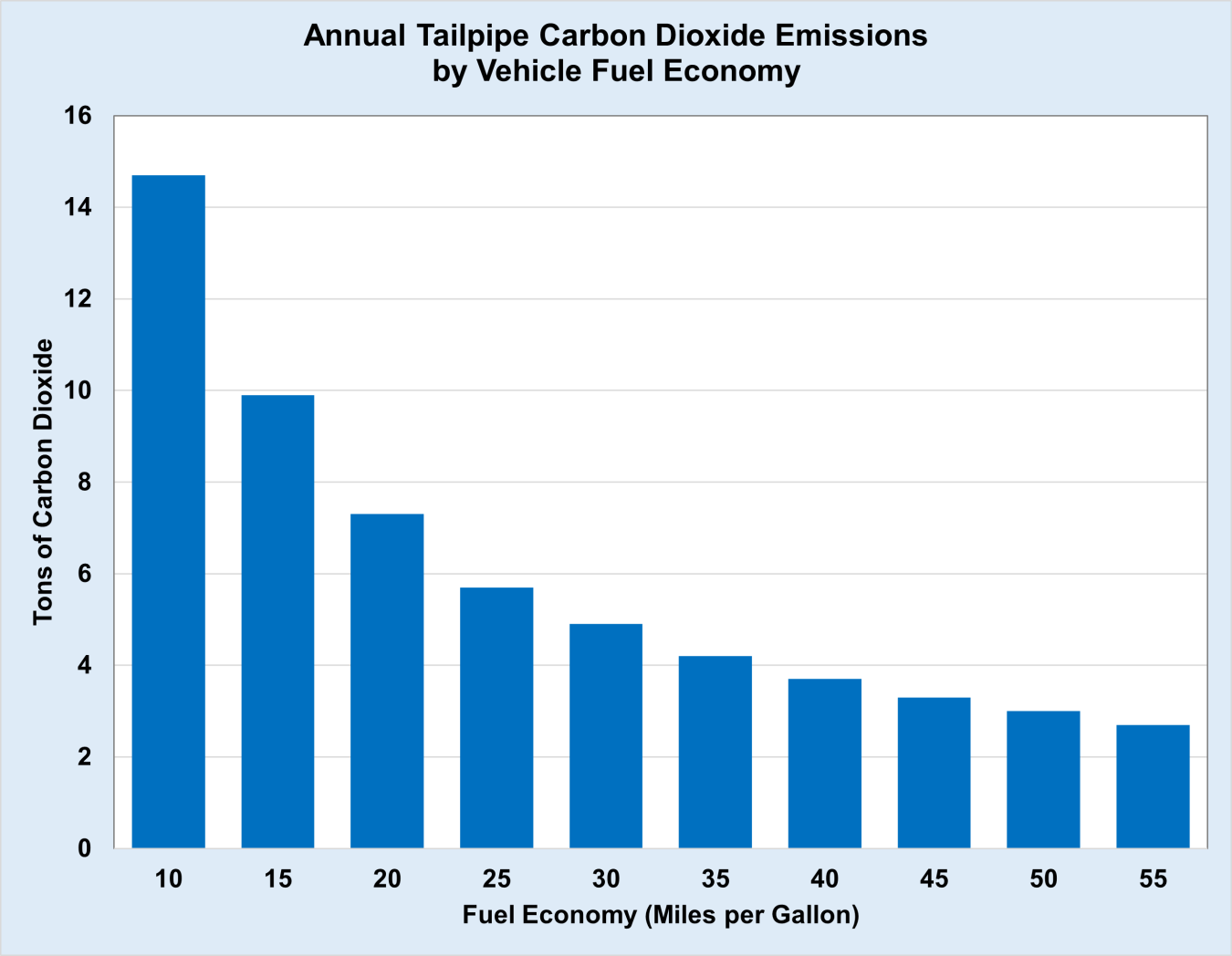Efforts to improve fuel economy also reduce carbon dioxide (CO2) emissions, but improvements at the low end of the fuel economy spectrum produce the greatest CO2 emissions reductions.
November 14, 2022Efforts to improve fuel economy also reduce carbon dioxide (CO2) emissions, but improvements at the low end of the fuel economy spectrum produce the greatest CO2 emissions reductions. A vehicle that gets 10 miles per gallon (mpg) and is driven 15,000 miles per year will produce about 15 tons of CO2 annually. Increasing that fuel economy by 5 mpg to 15 mpg will produce about 10 tons of CO2 annually – a 33% reduction in annual CO2 emissions. As fuel economy improves, there is a diminishing impact on emission reduction. At the high end of the fuel economy spectrum, a 5-mpg improvement from 50 to 55 mpg only yields an improvement of 0.3 tons of annual CO2 emissions.

Note: Based on 15,000 annual miles and regular gasoline.
Source: U.S. Department of Energy and U.S. Environmental Protection Agency’s Fuel Economy Website

